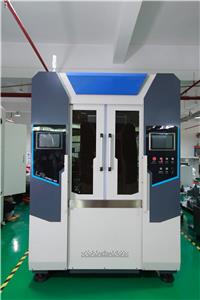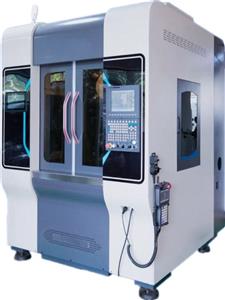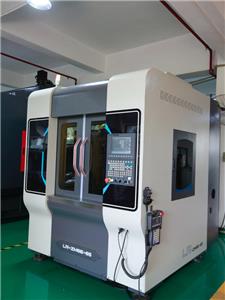- Home
- >
- News
- >
- die casting manufacturing
- >
- Temperature control and influence in die casting process
Temperature control and influence in die casting process
There are two temperature indicators in die casting production. The first is the pouring temperature. The second is the mold temperature. The effects of these two temperature indicators on die casting production are discussed below.
1, pouring temperature
The pouring temperature refers to the temperature at which the molten metal enters the cavity from the pressure chamber, and the casting temperature is controlled by controlling the temperature of the alloy liquid in the holding furnace.
For castings of different shapes and structures, the pouring temperature can be controlled at 630-730 °C; for thin-walled complex parts, higher temperatures can be used to improve the fluidity of the molten metal and obtain good forming; for thick-walled structural parts, Lower temperatures are used to reduce solidification shrinkage. However, if the pouring temperature is too high, the amount of air in the aluminum water will increase, which will cause pinholes, shrinkage holes and surface blistering in the thick wall of the casting. At the same time, the corrosion of the mold will be accelerated, and the mold will be prematurely aged and cracked. The pouring temperature is too low, the fluidity is poor, and it is easy to produce defects such as cold separation, flow pattern, and insufficient pouring; if the temperature is too low, aluminum is prone to component deviation, which causes hard spots in the casting, which makes post-processing difficult. As the casting temperature increases, the mechanical properties of the die-casting mold are significantly reduced.
2, mold temperature
The mold temperature generally refers to the surface temperature of the mold. The standard state should be about 1/3 of the casting temperature of the alloy liquid. The mold temperature greatly affects the mechanical properties, dimensional accuracy and life of the die-casting mold.
(1) Die temperature affects die casting life
In the continuous die casting production process, each time the die casting is performed, the mold temperature is cycled from high temperature to low temperature, and is continuously heated and cooled, and thermal stress is generated inside the mold due to the temperature difference. When the mold material is in a tough state, the stress causes plastic deformation of the mold; and in the brittle state, the stress causes hot cracking and cracking of the mold. Periodic thermal stress causes the mold to thermally fatigue and crack. The mold temperature is too high and the mold is easily deformed.
(2) The effect of mold temperature on the release agent
When the mold temperature is too high, the release agent is excessively volatilized at a high temperature, and a dense film cannot be formed, which easily causes a sticking mold. When the mold temperature is too low, the film formed by the release agent contains non-volatile water, which causes a poor mold release effect, and also causes pores of the casting and cold partition defects.
(3) The influence of mold temperature on the quality of die castings
When the mold temperature is lower than 130 degrees: due to the mold temperature is too low, the castings almost all of the defects such as under-casting, cracking, cold separation, flow pattern, etc., the yield is almost zero.
When the mold temperature is between 130-150 degrees: Since the mold temperature is close to the ideal temperature, the casting may be formed, but the quality is unstable. Most workers are now flowing and cold.
When the mold temperature is between 150-300 degrees: a suitable casting stable zone.
When the mold temperature is higher than 300 degrees: the casting temperature is too high, and it is easy to produce surface bubbles, sticking, shrinkage, soldering and other defects.
It can be seen that the mold temperature exceeds 250 ° C and the mechanical properties are degraded.
(4) mold heat balance
The mold temperature directly affects the quality and productivity of the die casting. In order to improve the stability of the die casting production, the heat absorption and heat dissipation of the mold should maintain thermal balance. Q0= Q1+ Q2+Q3+ Q4+ Q5
Q0 – Q1=Q2+Q3+ Q4+ Q5
Where: Q0 is the heat (J) of the molten metal delivered to the mold by a mold,
Q1 is the heat (J) brought out by the ejector casting;
Q2 is the heat absorbed by the mold (J);
Q3 is the heat taken away by the cooling water (J);
Q4 is the heat that is naturally scattered (J);
Q5 removes heat (J) from the spray release agent.
Example: ADC12 casting weight 1 kg, pouring temperature 650 ° C, casting removal temperature 465 ° C, specific heat capacity 1.09 kJ / kg / ° C, total sensible heat 201 kJ / kg, solidification latent heat 389 kJ / kg, then: mold suction heat - casting belt Heat output = [(650 – 465) x1.09+389] = 590kJ From this analysis, the mold absorbs more heat than it does. In order to improve productivity, relying on natural heat dissipation, heat dissipation during spraying is limited, mainly relying on cooling water, and controlling mold temperature by controlling water volume, water pressure, water temperature, and pipe arrangement. A more advanced method is to use a mold temperature machine.
(5) mold working temperature
1) Preheating temperature: 150 - 180 °C.
Warm-up benefits:
1 to avoid the metal liquid due to chilling to reduce fluidity:
2 improve the toughness of the mold;
3 Reduce the temperature difference and protect the mold.
2) Working to maintain temperature: 180 – 280 °C.
(6) Problems in production
1) Preheat the mold before die casting.
2) The production cycle of each die casting (from casting to casting) is as consistent as possible, and the working rhythm of Shenzhen Yuge operators is consistent.
3) Always check the mold temperature and adjust it in time to maintain a stable temperature field.
4) For large castings and thick-walled castings, controlling the mold temperature allows the alloy liquid to be sequentially solidified during the cooling process, and is fully replenished to eliminate shrinkage and shrinkage defects.
5) The best way to control the mold temperature is to use an automatic mold temperature control system and a mold temperature machine. At present, most of the small and medium-sized die-casting machine operators still have experience and sensitivity to mold temperature control.
The mold temperature is high, and more mold release agent is sprayed; the mold temperature is lower and the spray is less. Although this can also control the temperature, it also has an adverse effect on the quality of the casting and the life of the mold. Unscientific operating habits are very harmful.
Now, in order to maintain the optimal mold temperature, many domestic and foreign manufacturers have adopted a series of automatic temperature control equipment to control the opening, closing and water volume of the solenoid valve of the cooling water pipe by the temperature detected by the thermocouple. Some manufacturers also use a die-casting mold temperature machine with both preheating and cooling functions. In order to control the temperature of the mold in the best range.




